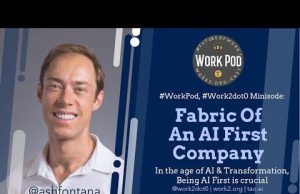Mastering the Art of Negotiation: Strategies for Achieving Win-Win Outcomes in the Modern Workplace
In the dynamic tapestry of today’s business world, the subtle art of negotiation stands as a cornerstone of organizational success. The ability to navigate discussions, recognize mutual objectives, and forge agreements that benefit all parties involved is a pivotal skill set that separates the good from the great in the workplace. It’s not just about driving a hard bargain, but about understanding the multifaceted nature of human interaction and the diverse needs and goals of the parties at the table.
As we delve into the intricacies of negotiation, we begin to uncover the psychological underpinnings that govern decision-making. Why do some negotiators seem to consistently arrive at satisfactory conclusions, while others falter and fail to persuade? The answer lies in a blend of keen emotional intelligence, strategic preparation, and the capacity to listen actively and empathetically.
The dance of negotiation also involves a keen awareness of power dynamics. Knowing when to exert influence and when to yield is crucial for maintaining a collaborative atmosphere. These dynamics are further complicated by the expanding landscape of remote work, where cues are often digital rather than physical, and the challenges of multicultural workforces, where misunderstandings can lead to missed opportunities.
In examining case studies from across the spectrum of trades and industries, we find common threads. Successful negotiation often hinges on preparation, transparency, and the establishment of trust. From the boardroom to the shop floor, those who can articulate their needs while acknowledging the needs of others tend to thrive.
However, as labor laws evolve and the workplace becomes more fluid and digitally connected, our negotiation strategies must also adapt. Traditional face-to-face strategies are being supplemented—or even replaced—by virtual negotiation rooms, where the absence of physical presence calls for a new kind of rapport-building and a reimagined approach to conflict resolution.
To shed light on these developments, we’ve reached out to thought leaders in human resources, organizational psychology, and labor negotiation. Their insights underscore the importance of continuous learning and adaptation. As industries shift and our understanding of the workplace deepens, the value of a well-honed ability to negotiate cannot be overstated.
It is our hope that through this exploration, our readers will gain a richer understanding of negotiation strategies that work. We aim to equip both workers and management with the tools needed to approach negotiation not as a zero-sum game, but as an opportunity for joint problem-solving and growth. With these skills, employees can leverage their value to the fullest, and employers can foster a cohesive, forward-thinking environment that is built on the bedrock of mutual respect and shared success.
By embracing these principles, we contribute to shaping a workplace that is not only productive but also imbued with a sense of fairness and cooperation. In the end, the true measure of our negotiation prowess lies in the legacy we leave—a workplace that is more harmonious, more innovative, and more resilient as a result of our collective effort to understand and implement effective negotiation strategies.






























